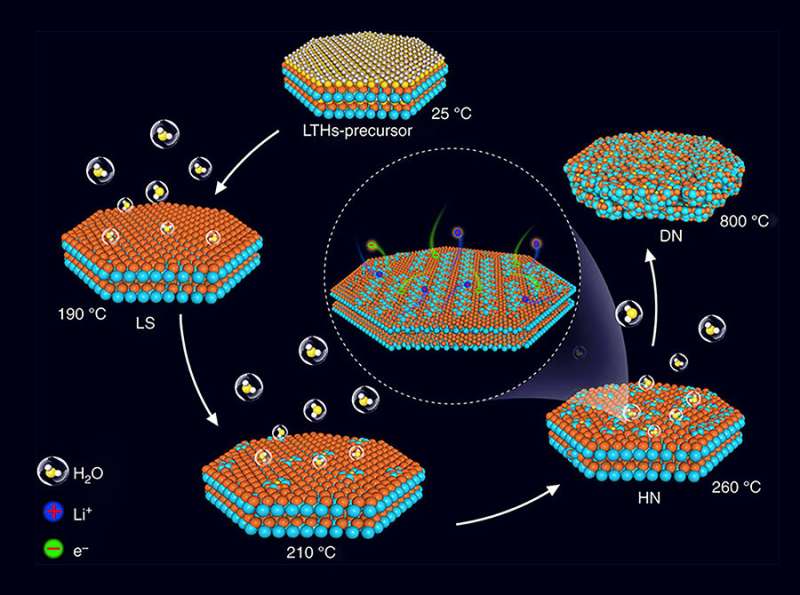The wet road to fast and stable batteries

An international team of scientists—including several researchers from the U.S. Department of Energy's (DOE) Argonne National Laboratory—has discovered an anode battery material with superfast charging and stable operation over many thousands of cycles.
Over the last several decades, a multidisciplinary team of battery scientists at Argonne helped launch the modern energy storage race by conducting extensive research on a host of materials for lithium-ion batteries with applications in hybrid and all-electric vehicles, as well as stationary energy storage for buildings and the electric grid.
One of Argonne's latest contributions to innovative new materials for lithium-ion batteries is a water-bearing compound, "lithium titanate hydrate," developed in collaboration with researchers from Tsinghua University in Beijing and the Massachusetts Institute of Technology. This material, discussed in a recent Nature Communications article, could replace the graphite anode commonly used in lithium-ion batteries.
As Jun Lu, Argonne battery scientist and co-author, explained, past research had identified lithium titanate as a promising anode material because of its potential for fast charging and long cycle life, as well as safer operation compared with graphite. In synthesizing this material, researchers used a water-based process that involved a final step of heating the anode material to very high temperature (above 500°C) to drive out the water completely. This step was needed because, during battery operation with this material, the water would react with the electrolyte and degrade performance.
Argonne Distinguished Fellow Khalil Amine, who also co-authored the study, noted that the heating to such a high temperature caused unwanted coarsening and clumping of the structure. The international team found that, by heating the anode material to a much lower temperature (less than 260°C), they could remove the water near the surface, but retain the water in the bulk of the material without coarsening and clumping of the structure. When the scientists tested the material in the laboratory, cycling stability improved and capacity degraded only slightly over 10,000 cycles. The material also charged very quickly—within less than two minutes—the team found. As noted by Jun Lu, "Most of the time, water is bad for non-aqueous lithium-ion batteries. But in this case, it can be downright good."
The research team tracked how material composition and structure changed when heated by using various advanced characterization techniques, including x-ray diffraction provided by the Advanced Photon Source, a DOE Office of Science User Facility located at Argonne. When analyzing the combined characterization data, the team reported that the trapped water in the anode material improved performance by promoting structural diversity and forming nanostructures. The video above shows the change in composition and structure as the starting material is heated and water is expelled to form a new layered structure (LS), then the desired hydrated nanostructure (HN), then beyond the desired structure all the way to a completely dehydrated nanostructure (DN).
Looking to the future, Jun Lu observed that, because water is everywhere in nature and common in chemical synthesis, the fabrication approach reported in this research could open the door to discovery of other high-performance electrode materials.
More information: Shitong Wang et al. Lithium titanate hydrates with superfast and stable cycling in lithium ion batteries, Nature Communications (2017). DOI: 10.1038/s41467-017-00574-9
Journal information: Nature Communications
Provided by Argonne National Laboratory





















